I had a great discussion yesterday with Joshua Mauney of Paragon Homebuilding, who specializes in Universally Designed homes in North Carolina. I’m going to paraphrase him here – no one wants their home’s bathroom to look like a fast-food chain restroom.
So how do we design age-friendly bathrooms that are as luxurious as they are easy to use? I’ve listed some of our tried-and-true features for designing bathrooms that work for everyone, regardless of age or ability.
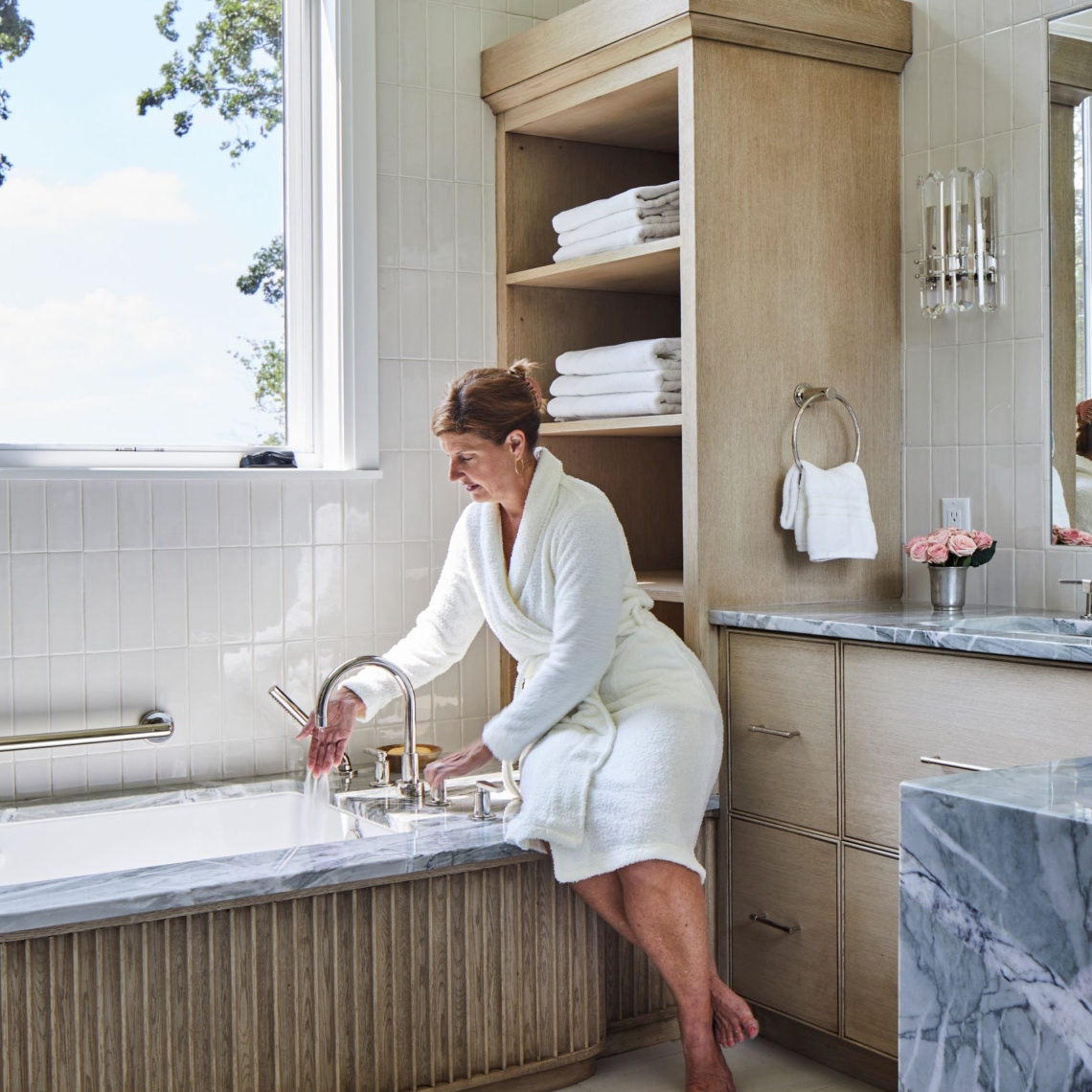
-
Embrace Grab Bars
-
Curbless Showers are All That
-
Adaptable Now Means Usable in the Future
-
Tub Decks for Transfer
-
Don’t Center your Controls
-
Bump up the Slip Resistance
-
Plan Ahead
Most homes in the US aren’t designed to be age-friendly, much less injury friendly, grandparent friendly, neighbor friendly, or toddler friendly. When we start to think about all of the people who use our homes, it just makes sense to pay a little special attention to spaces that can be challenging for anyone with limited mobility, strength or balance. These tips are a great place to start thinking about renovations that change our homes for the better, for everyone!
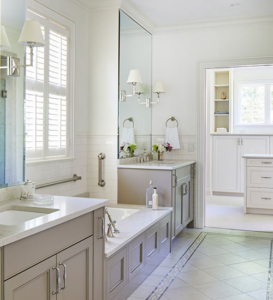
Grab bars are no longer utilitarian medical equipment; they can seamlessly integrate into your bathroom’s design while offering crucial support. Many options now match plumbing suites from major manufacturers, providing both safety and aesthetic appeal. There are standards for locating and placing grab bars but working with your architect/contractor to locate them according to your specific needs helps increase usability. Even if you don’t require them immediately, ensure your bathroom walls have enough blocking to accommodate grab bars in the future.
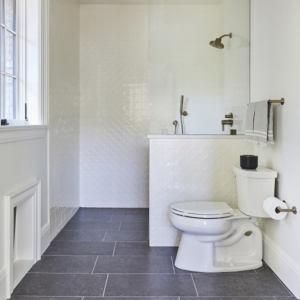
Curbless showers have become a popular design trend not just for wheelchair accessibility, but also for their universal usability. These showers eliminate tripping hazards, making them ideal for people of all ages and abilities. They are particularly beneficial during post-surgery recovery or while dealing with temporary mobility challenges. They also just look great – they can make a smaller bathroom appear larger especially when coupled with frameless glass shower enclosures.
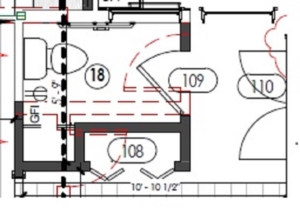
If your plans include a separate toilet room, consider making it future wheelchair or assistance-friendly by incorporating a removable cabinet or closet. This flexibility ensures that the space can be easily adapted to accommodate changing needs without extensive renovations – and in the interim – provides great storage space for linens and toiletries.
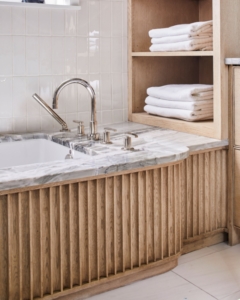
While standalone tubs are visually stunning, their usability can be limited for those with mobility issues. Instead, consider undermount bathtubs with wider tub decks. This configuration allows bathers to sit on the deck and safely transfer their legs in and out of the tub. This feature alone can greatly enhance safety as well as create an opportunity for elegant stone slab or detailed tub skirt designs.
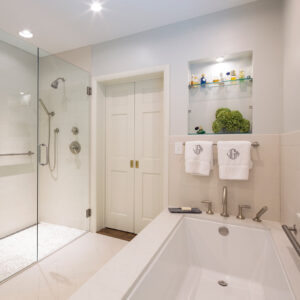
We generally offset our shower controls for walk in showers so that they can be accessed from the shower door without getting in the shower or reaching across a spray. This allows you to get the perfect temperature before you get in – rather than shivering or trying to escape a scalding spray. Preset shower temperature controllers can also help prevent scalds, which can happen more easily as we age. When we have benches in showers, we like to add a second control for a hand shower within reach of the bench. Falls are a significant concern, especially among older adults. Incorporating features that reduce the risk of slips and falls is a smart choice. In the shower, opting for smaller tiles with more grout lines provides better traction when the floor is wet. Think mosaics, marble hex tiles, and even pebble tiles! For the rest of the bathroom, choose tiles with commercial-grade slip resistance. Applying a non-slip sealant to the tiles can further enhance their traction, reducing the chances of accidents. The worst time to think about safety features in the bathroom is when it’s an emergency situation. This results in temporary fixes and jerry-rigged assemblies that can present hazards themselves, and certainly don’t contribute to the overall aesthetic appeal of the space. Whether you are planning your new home in your forties, or looking to renovate in your seventies, working with a residential architect who can incorporate these features into the aesthetics of your home during the design process is important. It means you have what you need when you need it – without compromising on your level of finish or sense of style.


